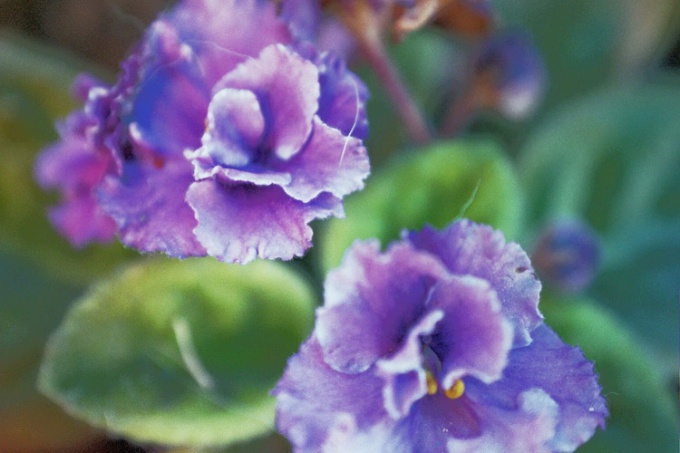Instruction
1
Irrigate preferably on a regular basis, a small amount of water, pouring it under the lower leaves of violets. For the amount of water necessary to prevent waterlogged plants. Avoid getting water on the center of the plant: there is a point of growth of violets, which are developing young leaves.
If you frequently get water on the leaves they formed ugly white spots from the deposited salts.
If you frequently get water on the leaves they formed ugly white spots from the deposited salts.
2
To determine when it was watering time can be visually: the lower leaves start to descend and cease to be elastic. Or simply touching with your finger the earth, if dry, time to water, if wet, wait a few more days. Although young violets need to keep the soil moist.
3
The frequency of watering is set empirically because much depends on the size of the pot and the materials from which it is made. So, clay pots tend to evaporate the moisture through the walls and the ground in plastic pots stays wet.
Much also depends on the ambient temperature, time of year, size of the plant.
Much also depends on the ambient temperature, time of year, size of the plant.
4
To water the violets best of all at the same time in a constant mode. On the other hand, if plants are grown under natural, not artificial lighting, you need to consider natural schedule: spring and summer violets watered in the morning, and in the spring-winter season day.
5
Watering plants need to produce water, at a distance in an open pan for 2-3 days, or use filtered water containing no chlorine and harmful impurities. To water the violets with rain water or melted snow is not recommended due to adverse environmental conditions.
Water for irrigation should be at room temperature or slightly warmed in the microwave.
Water for irrigation should be at room temperature or slightly warmed in the microwave.
6
There are several ways of watering.
The most recommended watering from the top. To do this, use a small watering can with a thin spout, which can be replaced by a syringe of appropriate size or a plastic bottle mounted in the cover by a thin tube. Stop watering at that moment, as shown in the pan water. On the surface of the earth are recommended to put some expanded clay or sphagnum to hold on the surface of harmful salts. These materials periodically need to be replaced for fresh.
The most recommended watering from the top. To do this, use a small watering can with a thin spout, which can be replaced by a syringe of appropriate size or a plastic bottle mounted in the cover by a thin tube. Stop watering at that moment, as shown in the pan water. On the surface of the earth are recommended to put some expanded clay or sphagnum to hold on the surface of harmful salts. These materials periodically need to be replaced for fresh.
7
An easier way is watering from the bottom. The pot is placed in a large container, which is filled with water to such an extent that its level was below the top of the pot. Stop watering once the top layer is sufficiently moist. The disadvantage of this method is that harmful salts are on the surface of the earth coma, so it periodically has to be replaced.
8
One of the problems faced by urban residents at watering – excess water hardness. To alleviate it you can use boiling or add a few (5-6) of crystals of citric or oxalic acid to 1 litre. It is possible to use 3% vinegar) 1-2 tsp in 1 litre of water. But acidified water can't water the plant all the time, this measure is applied only 1 time per 4-5 weeks.
9
If excessive watering occurs, the acidification of the soil and the termination of access of oxygen to the plant roots. The roots rot and the plant begins to wither. To resolve this problem, remove the plant gently from the pot, change the soil to fresh, rotten roots were removed and the remaining washed with a pale solution of potassium permanganate. The treated plants are transplanted in the same pot.
